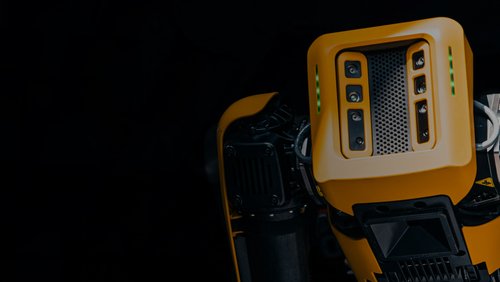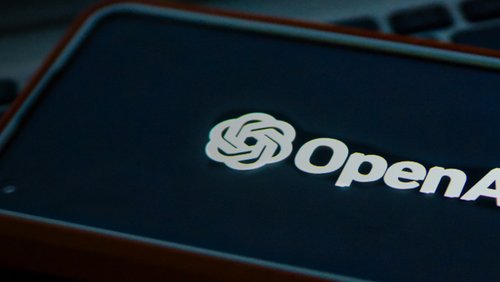4 Oct 2024
As Artificial intelligence (AI) continues to grow in scale and scope, it is affecting every industry, including engineering. Here’s a round-up of some practical ways engineers in Aotearoa are applying AI.
Inspection innovation
Engineering consultancy firm Beca is harnessing AI to help evaluate bridge conditions, specifically the 100-year-old Purewa Bridge in Tāmakai Makaurau’s Ōrākei suburb. The project was a finalist for the innovation category at the 2024 New Zealand Workplace Health and Safety Awards.
AI-enabled drones equipped with high-definition cameras captured a total of 15,000 high-resolution images and acoustic soundings from various heights and angles of the bridge’s longitudinal beams, piers and underdeck, with Niricson providing the AI tools and software. Computer vision and machine learning were then used to analyse the data and conduct a digital condition assessment.
“It’s faster, more accurate and eliminates subjectivity,” says Jack Donaghy, Digital Innovation Leader – Transportation & Infrastructure NZ at Beca.
“It also reduces the need for traffic management and is much safer as the drones are often able to get to areas inaccessible by humans.”
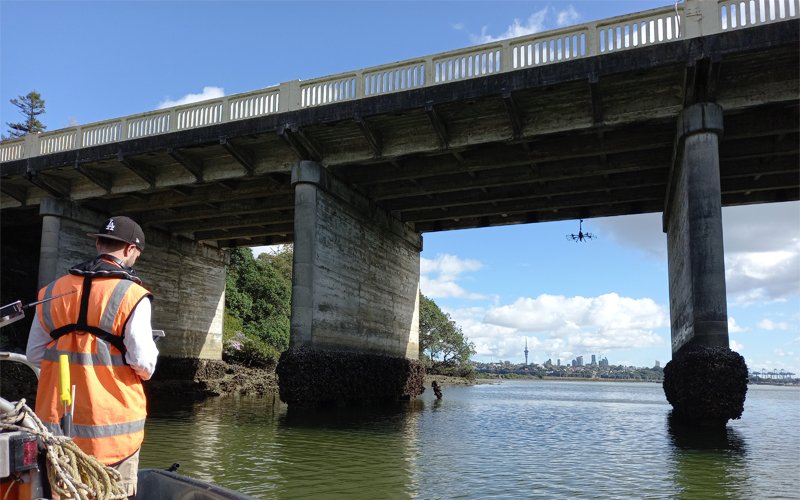
Beca's AI-enabled drones captured thousands of images of Purewa Bridge’s structure in order to conduct a digital condition assessment. Photo: Beca
Beca is also looking into other uses for AI. For instance, they’ve built PIPE-i, a robotic survey vehicle that captures detailed spatial information of challenging and hazardous confined spaces, such as culverts and tunnels, through images, Lidar and videos.
“We’re developing functionality into it where once it captures the images of the inside of the culverts, AI will be able to pick up the condition of the culverts as well,” Jack says.
In the past year or so, Jack has observed that clients are becoming more open to the possibilities of AI. “With some of our public sector clients, they are advocating for the use of AI. They want to do more but faster and cheaper by leveraging technology.”
However, AI still has a long way to go for it to become mainstream. The adoption of AI is “… not as fast as I thought it would be”, says Jack.
“But I’m seeing that changing. A lot of clients are beginning to ask the right questions and starting to trial AI and see its benefits. It may take a few years, but anything that’s repeatable with big data, especially in asset management, is ripe for AI and is a big opportunity.”
Roadworks risk reduction
At integrated services provider Downer, health and safety is a prime consideration. Downer’s Transport and Infrastructure team has partnered with design and technology company RUSH to make roadworks safer for both workers and road users through R/VISION, a cloud-based, AI-driven workflow automation platform.
Images and videos from mobile camera units are transmitted to R/VISION, which runs computer vision models for image, object and action recognition. Based on what the models are trained to recognise, the platform triggers actions, such as text and email alerts.
“We needed a mobile solution, especially for road maintenance sites where roads are getting resurfaced and chip sealed, or new kerbs and channels are laid down,” says Cameron Hyndman, National Digital Engineering Lead at Downer.
It’s like having a pair of eyes looking out for safety issues, but they don’t get tired and they’re picking up everything.
He adds that R/VISION can be used to capture information about traffic speed, traffic encroaching into live sites and whether workers are wearing their personal protective equipment. Also, whether people are walking into a no-go zone, among other hazards and safety practices.
“We can use it as a risk management tool,” says Oliver Fradley, Maintenance Manager at Downer.
“It’s about being able to visually represent to the teams when they’re breaching safety zones and the like. There’s a huge amount of worth at ground level for the people actually working on the sites.”
Danu Abeysuriya, Founder and Chief Technology Officer at RUSH, adds that the system “… allows you to get information quickly and disseminate it to the right people to make good decisions much faster. What that means is that your risk changes in days or hours rather than months”.
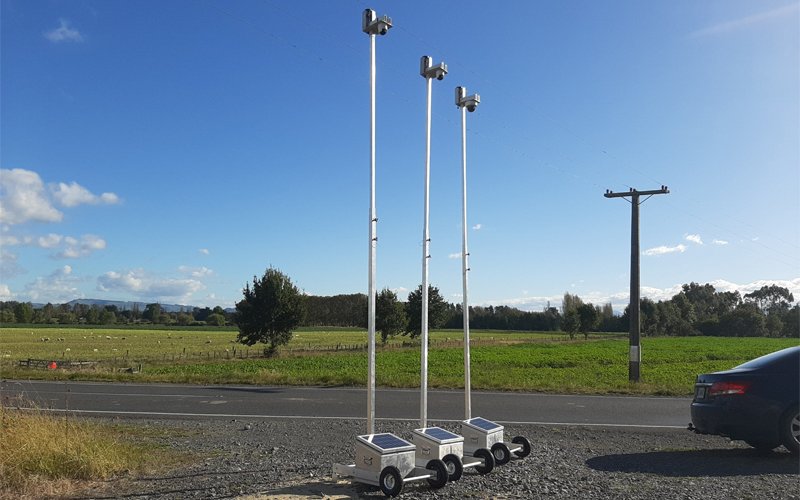
Mobile camera units send images and videos to R/VISION, RUSH's AI-driven workflow automation platform. Photo: RUSH
As with other visual AI technologies, privacy presents the biggest challenge. Both Downer and RUSH ensure they comply with the Privacy Act, distributing information brochures to teams and putting safeguards in place, such as blurring faces and front yards, and anonymising and aggregating data and statistics so people aren’t individually identifiable.
“The feedback we got from the teams on site – who can often be wary of new technology, especially if it’s something with cameras – was positive,” says Oliver.
“They understood the benefit it was bringing them in the safety space. And from an operational point of view, if you can get your teams on the ground to embrace something that brings safety benefits, it’s an easy sell.”
Data from R/VISION can also be used during safety audits to create better safety practices in the future.
“It’s like having a pair of eyes looking out for safety issues, but they don’t get tired and they’re picking up everything,” Cameron says.
Speedy surface design
Engineering, planning and surveying consultancy Civix has been using AI for eight years and has built its own cloud-based, AI-powered design software for land development projects, Allsite.ai.
Instead of manual inputs for every aspect of the surface design, Allsite.ai automatically generates 3D models from 2D layouts, local design standards and other parameters.
“Our system comes up with the solution and then the engineer reviews it,” says Sam Blackbourn CMEngNZ CPEng, Civil Engineer and Director at Civix.
“For specific site constraints, engineers still have the ability to override and lock different parts of the design that the AI produces, and the system will optimise around those results.”
For Sam, the benefits of AI boil down to quality and speed, especially for large-scale developments.
“We’re producing 3D designs for sites in around three days that would typically take two months. It’s less time manually laying out designs and coming up with a spreadsheet for calculations. It’s more around reviewing, correcting, and spending time on the difficult facets that a piece of software just can’t do.”
Training is still needed to understand how the system works. And falling back on manual methods remains an option, particularly for edge cases and other scenarios where the AI system just doesn’t have enough examples to follow.
A lot of engineers are used to doing it all themselves, but now they get a full solution that they review and correct.
Sam believes a key factor when applying AI in engineering is a mindset change.
“A lot of engineers are used to doing it all themselves, but now they get a full solution that they review and correct,” Sam says.
“There’s an element of building trust with an automated AI system. And once AI does all the easy parts, what’s left is the complex problem-solving. That is the core of what engineering is, and I don’t think that’s going away.”
Asset management assistance
After researching AI for the past five years, Fulton Hogan has started employing the technology more widely since 2022. The construction firm has been using AI for its maintenance contracts, assisting with the assessment of road condition, which includes identifying pavement and surfacing failures such as potholes, cracking and flushing, among others.
“Our primary driver was safety,” says Willy Silcock MEngNZ, an engineer within Fulton Hogan’s Engineering Solutions team.
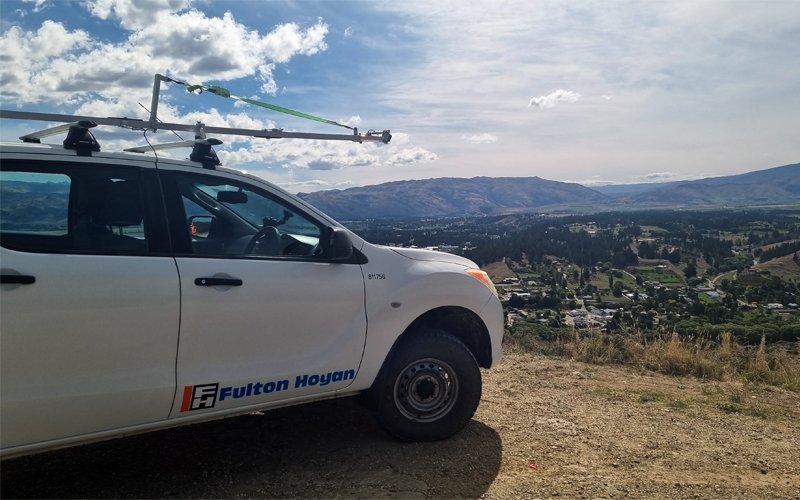
Video collection apparatus overlooking the Alexandra Basin. Photo: Fulton Hogan Ltd
“Our teams are out there collecting data on the size, severity and type of defect. We want to take them off the road, which also means we won’t be affecting road users while doing our checks.”
Videos of road networks are analysed by AI, which “… acts as our first cut of information”, Willy says. He adds that well-trained AI models avoid missing defects and provide an objective view of how the road is looking.
AI models can also detect early warning signs, which can be valuable for long-term asset management.
“We might have been considering road rehabilitation in eight years, but that might be extended out to beyond 10 years by proactively ‘patching’ any isolated early warning signs of cracking, allowing us to protect the asset at the right time and optimise investment levels,” says Willy.
Yet machine-assisted fault identification can be prone to generating false positive results. For example, the system might pick up a dark spot on an image or video frame as cracking when it’s just a shadow.
“We need to take people on a change management journey to show them the strengths and also limitations of the data,” Willy says.
“The technology has come a long way in the last few years and the accuracy of AI outputs is improving all the time – some of the raw outputs don't require a review due to a high historic acceptence rate.”
Moreover, aggregation tools are essential to understand what’s happening at a higher level.
“One of the things we find with AI is that data-rich isn’t necessarily easy to understand,” says Willy.
“We need to aggregate that data, slice and dice it, and join it all together so we can tell a story.”
Ultimately, Willy envisions AI helping advance the engineering sector.
“The big benefits lie in the data-driven analytics and evidence-based decision-making that AI can offer.”
This article was first published in the September 2024 issue of EG magazine.

